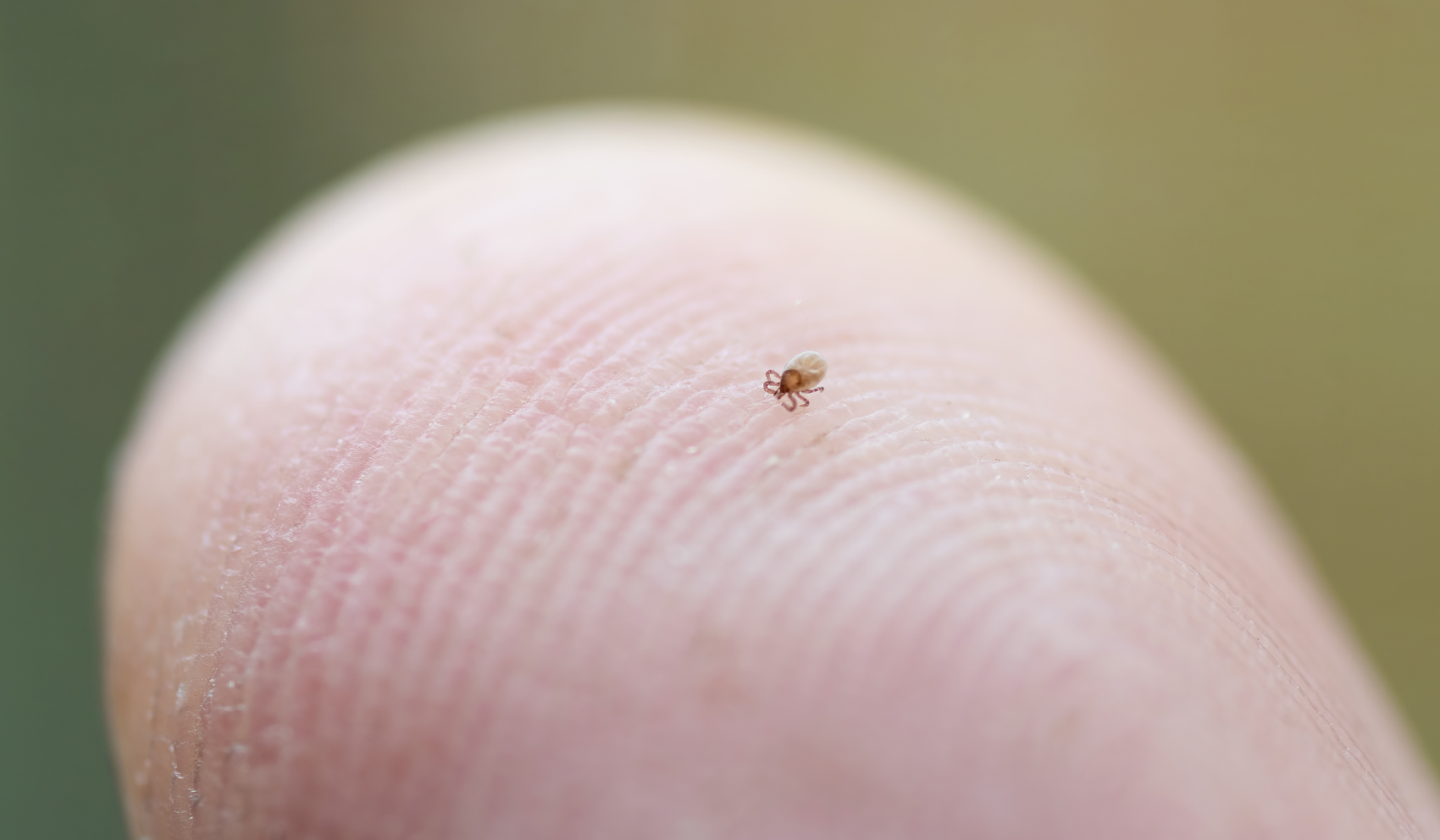What is the best way to avoid ticks while camping? The best way to avoid ticks while camping is to use a combination of strategies, including wearing protective clothing, using tick repellent, checking yourself and others for ticks regularly, and taking steps to control ticks in your campsite. This comprehensive guide will walk you through everything you need to know for tick prevention camping and enjoying a tick-free outdoor experience.

Image Source: www.acacamps.org
The Threat of Ticks: Why Camping Tick Safety Matters
Ticks are small, blood-sucking creatures that can transmit diseases to humans and animals. Camping often places you in their preferred habitat, increasing your risk of encountering them.
Tick-Borne Diseases: A Serious Concern
Ticks can carry various pathogens that cause diseases like:
- Lyme disease: Characterized by a bullseye rash, fever, fatigue, and joint pain. If left untreated, it can lead to neurological and cardiac problems.
- Rocky Mountain Spotted Fever (RMSF): Symptoms include fever, headache, and rash. It can be fatal if not treated promptly.
- Ehrlichiosis: Causes fever, headache, muscle aches, and fatigue.
- Anaplasmosis: Similar symptoms to ehrlichiosis.
- Babesiosis: A malaria-like illness causing fever, chills, and fatigue.
- Alpha-gal syndrome (Red Meat Allergy): An allergy to red meat caused by a bite from the Lone Star tick.
Where Ticks Live: Identifying Tick Habitats
Ticks thrive in:
- Wooded areas: Forests provide ideal conditions for ticks to find hosts.
- Grassy fields: Tall grasses offer cover and moisture.
- Brushy areas: Shrubs and bushes provide hiding places.
- Leaf litter: Ticks often reside in fallen leaves, waiting for a host to pass by.
Proactive Strategies for Tick Prevention Camping
Being proactive is key. These strategies will help you minimize your exposure to ticks while camping.
Dressing for Success: Protective Clothing
Wearing the right clothing can significantly reduce your risk of tick bites.
- Long sleeves and pants: Cover as much skin as possible.
- Light-colored clothing: Makes it easier to spot ticks.
- Tuck pants into socks or boots: Prevents ticks from crawling up your legs.
- Wear a hat: Protects your head and neck.
- Closed-toe shoes: Keep your feet covered.
The Power of Tick Repellent: DEET and Permethrin
Tick repellent for camping is your first line of defense.
DEET Camping Ticks: The Gold Standard
- What is DEET? DEET (N,N-diethyl-meta-toluamide) is a widely used and effective insect repellent.
- How to use DEET: Apply DEET repellent to exposed skin, following the product instructions. Reapply as needed, especially after sweating or swimming.
- DEET concentration: A concentration of 20-30% DEET is generally sufficient for tick prevention.
- Safety concerns: DEET is considered safe when used as directed, but some people may experience skin irritation.
- Effectiveness: Highly effective at repelling ticks.
Permethrin Clothing Ticks: Treating Your Gear
- What is Permethrin? Permethrin is an insecticide that can be applied to clothing and gear.
- How to use Permethrin: Treat clothing and gear with permethrin according to the product label. Allow to dry completely before wearing.
- Longevity: Permethrin-treated clothing can remain effective through several washes.
- Safety: Permethrin is safe when used as directed, but avoid direct skin contact during application.
- Effectiveness: Kills ticks on contact, providing an extra layer of protection.
| Repellent | Active Ingredient | Application | Effectiveness |
|---|---|---|---|
| DEET | DEET | Exposed Skin | High |
| Permethrin | Permethrin | Clothing and Gear | High |
Natural Tick Repellents Camping: Exploring Alternatives
If you prefer to avoid synthetic chemicals, consider natural tick repellents. While they may not be as effective as DEET or permethrin, they can still offer some protection.
- Essential oils: Oils like lemon eucalyptus, cedarwood, and lavender have repellent properties.
- How to use essential oils: Dilute essential oils with a carrier oil (like coconut oil or almond oil) and apply to exposed skin. Reapply frequently.
- Effectiveness: Effectiveness varies. Some studies show lemon eucalyptus is fairly effective.
- Other natural options: Garlic, vinegar, and neem oil are sometimes used as tick repellents, but their effectiveness is not well-established.
Hiking Tick Bite Avoidance: Staying Safe on the Trails
Hiking increases your exposure to tick habitats. Take these precautions:
- Stay on marked trails: Avoid walking through tall grass, brush, and leaf litter.
- Walk in the center of the trail: Minimize contact with vegetation.
- Perform regular tick checks: Check yourself and your companions for ticks while hiking.
- Wear gaiters: Gaiters can provide extra protection for your lower legs.
Campsite Tick Control: Creating a Tick-Free Zone
Controlling ticks in your campsite can help create a safer environment.
Choosing the Right Campsite: Location Matters
- Select a sunny, dry campsite: Ticks prefer shady, moist environments.
- Avoid areas with tall grass, brush, and leaf litter: These are prime tick habitats.
- Clear vegetation around your campsite: Remove any potential tick hiding places.
- Consider using a tent with a floor: This provides a barrier against ticks.
Creating a Tick Barrier: Physical and Chemical Options
- Gravel or wood chip barrier: Create a barrier around your campsite to deter ticks from entering.
- Tick tubes: These tubes contain cotton treated with permethrin. Mice collect the cotton for nesting material, killing ticks on the mice.
- Yard sprays: Consider using a tick control spray around your campsite perimeter. Follow product instructions carefully.
Regular Maintenance: Keeping Ticks at Bay
- Mow grass regularly: Keep grass short to reduce tick habitat.
- Remove leaf litter and debris: Clear away potential tick hiding places.
- Trim shrubs and bushes: Keep vegetation well-maintained to reduce tick habitat.
Tick Check Camping: Finding and Removing Ticks
Even with precautions, ticks can still find their way onto your body. Regular tick checks are crucial.
The Importance of Thorough Tick Checks
- Check yourself and others frequently: Perform tick checks at least once a day, especially after spending time in tick-prone areas.
- Focus on these areas:
- Behind the ears
- Hairline
- Neck
- Armpits
- Groin
- Behind the knees
- Between the toes
How to Remove a Tick: The Correct Technique
- Use fine-tipped tweezers: Grasp the tick as close to the skin’s surface as possible.
- Pull upward with steady, even pressure: Avoid twisting or jerking the tick, which can cause the mouthparts to break off and remain in the skin.
- Clean the bite area: Wash the area with soap and water or disinfect with rubbing alcohol.
- Save the tick (optional): Place the tick in a sealed bag or container and save it for identification or testing, if necessary.
- Monitor for symptoms: Watch for signs of tick-borne illness, such as rash, fever, or flu-like symptoms.
What should I do if the tick’s head breaks off in my skin? If the tick’s head breaks off, try to remove it with clean tweezers. If you can’t remove it easily, leave it alone and let your body heal. Keep the area clean and watch for signs of infection.
Tick-Borne Disease Prevention Camping: Knowing What to Do After a Bite
Early detection and treatment are crucial for preventing serious complications from tick-borne diseases.
Recognizing Symptoms: Know What to Look For
Be aware of the symptoms of tick-borne diseases, which can include:
- Fever
- Headache
- Muscle aches
- Fatigue
- Rash (including the characteristic bullseye rash of Lyme disease)
- Joint pain
Seeking Medical Attention: When to See a Doctor
- If you develop symptoms after a tick bite: See a doctor as soon as possible.
- If you are concerned about a tick bite: Don’t hesitate to seek medical advice.
- Inform your doctor about the tick bite: Provide information about when and where you were bitten.
FAQ: Common Questions About Tick Prevention
- Can I get Lyme disease from a tick bite? Yes, Lyme disease is one of the most common tick-borne illnesses, caused by the bacterium Borrelia burgdorferi transmitted through the bite of infected black-legged ticks.
- What is the best tick repellent for camping? Repellents containing DEET are considered highly effective. Permethrin-treated clothing offers excellent protection.
- Are natural tick repellents effective? Some natural repellents, like lemon eucalyptus oil, can provide some protection, but they may not be as effective as DEET.
- How long does a tick have to be attached to transmit disease? The risk of disease transmission increases with the length of attachment. Lyme disease transmission is less likely if the tick is removed within 24-48 hours.
- Is it safe to burn ticks off with a match? No, do not burn ticks off with a match or use other methods like petroleum jelly or nail polish remover. These methods are ineffective and can increase the risk of infection. Use fine-tipped tweezers.
- Who is most at risk for tick bites while camping? Anyone spending time outdoors in tick-prone areas is at risk, but children, hikers, campers, and outdoor workers are particularly vulnerable.
- What should I do if I find a tick on my pet after camping? Remove the tick carefully with tweezers, clean the bite area, and monitor your pet for signs of illness. Consult your veterinarian if you have concerns.
Enjoying a Tick-Free Camping Experience
By following these essential tips and tricks, you can significantly reduce your risk of tick bites and enjoy a safe and worry-free camping trip. Remember, a combination of preventive measures, regular tick checks, and prompt medical attention when needed are the keys to tick-borne disease prevention camping. Happy camping!

Melody Smith is a passionate writer, outdoor enthusiast, and camping expert based in the Seattle Metropolitan Area. With a deep love for nature and adventure, she shares her personal experiences, tips, and insights on MyCampingPro.com. A seasoned camper and traveler, Melody combines her creative background in design and writing with her love for the great outdoors, offering practical advice and inspiring stories to help others make the most of their outdoor experiences. When she’s not exploring the wilderness, you can find her painting, collecting vintage treasures, or diving into a good book.
